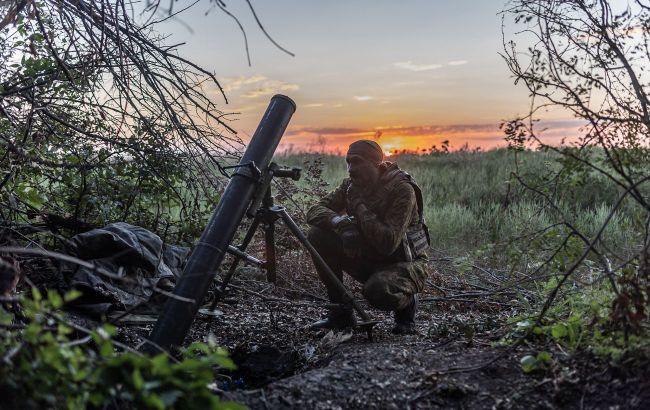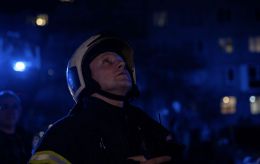On land and at sea: How Ukraine amazes the world in war with Russia
 Photo: Ukrainian military employ unique approaches in warfare (GettyImages)
Photo: Ukrainian military employ unique approaches in warfare (GettyImages)
Director of the New Geopolitics Research Network, Mykhailo Samus, speaks to RBC-Ukraine about the unique features of Ukraine's defense forces in the war against Russia.
The war in Ukraine is like no other that has come before. Prior to 2014, Ukraine's army was effectively in disarray, with no serious preparations for combat. Even during the period from 2005 to 2010 when attempts were made to reform the army, the main idea was to create a small, mobile force for use primarily in foreign NATO missions. In fact, NATO itself struggled for a long time to define its strategic purpose after the end of the Cold War.
Among the campaigns involving NATO countries were the so-called Yugoslav campaign and the U.S. operation Desert Storm, which largely involved precision airstrikes. NATO believed that traditional combat operations, as seen in World War II, were no longer the norm and that the main role would be played by airstrikes and intelligence, with ground forces mainly responsible for securing the gains made in air and missile operations.
Then came less-than-effective campaigns in Afghanistan and Iraq, which were also very different from the combat of World War II. Special operations, precision weaponry, and a more specialized approach dominated these conflicts.
Since February 24, 2022, Russia has essentially adopted the paradigm used by the Americans during Operation Desert Storm. The aggressor employed its entire arsenal of military forces, including reconnaissance, electronic warfare, cyber warfare, missile and air strikes, special operations forces, paratroopers, ground troops, and the navy. In essence, it was planned as a classic rapid air-missile-ground offensive operation. The Russians wanted to emulate the American model but did so poorly, failing to execute their plan effectively. These battalion tactical groups are a concept from the American military doctrine, not the Russian one.
In these conditions, Ukraine has managed to demonstrate a new approach to conducting military operations. Despite various obstacles, bureaucratic hurdles, and political challenges, Ukraine has created its own concept of national resistance, with territorial defense as a crucial element. Territorial defense filled the gaps, with regular forces handling the main tasks while territorial defense units fought enemy sabotage groups and held positions in populated areas. The territorial defense units of cities like Kyiv, Kharkiv, and Mykolaiv played a crucial role in defending these cities.
This is one of the unique features of our war, although it's not entirely a unique idea. We borrowed it from the Baltic and Scandinavian countries, such as Finland and Estonia. The Estonian Defense League (Kaitseliit), for example, has had experience defending its small territory since 1918. The idea behind this volunteer defense league is that the entire population participates in defense efforts in various ways, with different tasks.
National resistance and territorial defense are some of the best examples of how Ukraine has formed a new response to the supposedly advanced doctrine that Russia attempted to apply.
Another achievement of Ukraine is the use of a network-centric approach. This is not widely applied in most NATO countries, except for the United States, where it is supported by significantly greater resources and funding. A network-centric approach involves a tactical awareness system where reconnaissance assets like drones and electronic intelligence are integrated in real-time within a headquarters and distributed among units or strike assets.
In essence, information about the enemy, including coordinates, is shared among combat units in real-time. This allows for efficient and rapid enemy elimination. This is precisely what has put the Ukrainian army ahead of the Russian one, as the Russians have failed to establish automated command and control systems for battlefield use.
Efforts have been made by Russian Wagner mercenaries to copy the Ukrainian approach. Their assault groups also used drones, with commanders having full tactical awareness and sharing information with field commanders in real time. However, in the Russian armed forces, this is highly bureaucratic and, therefore, less efficient. Although they have started using reconnaissance, strike, and FPV drones more recently, it remains a problem for them. What we do well, the enemy can copy; they take the same models and use them in combat, so we must continually stay ahead.
Currently, we need to maximize the number of FPVs (First-Person View), and strike drones of various types so that we have hundreds of thousands on the battlefield, not just thousands. This will help minimize personnel losses. Therefore, our task now is to transition from a qualitative level to scaling our tactical awareness and network-centric approach quantitatively.
One could say that Ukraine has also adopted a drone-centric approach, where drones are the primary means of tactical reconnaissance. This allows tactical commanders to have real-time situational awareness, effectively execute missions, and neutralize the enemy. When you have complete situational awareness, knowing the enemy's location, their targets, and the nature of the terrain, it changes the nature of warfare compared to even just 10 years ago. This network-centric and drone-centric approach is what sets the Ukrainian army apart in conducting military operations.
People often say that the nature of the conflict closely resembles World War II. This is true, but it's because the Russians have drawn us into such a war, with the sheer scale of artillery use, tens of thousands of rounds fired daily. This has not been seen since World War II. The defensive positions built by the occupiers are more reminiscent of World War I, with extensive fortifications stretching for hundreds of kilometers in length and tens of kilometers in depth. Currently, we have a combination of World War I, World War II, and high technology.

